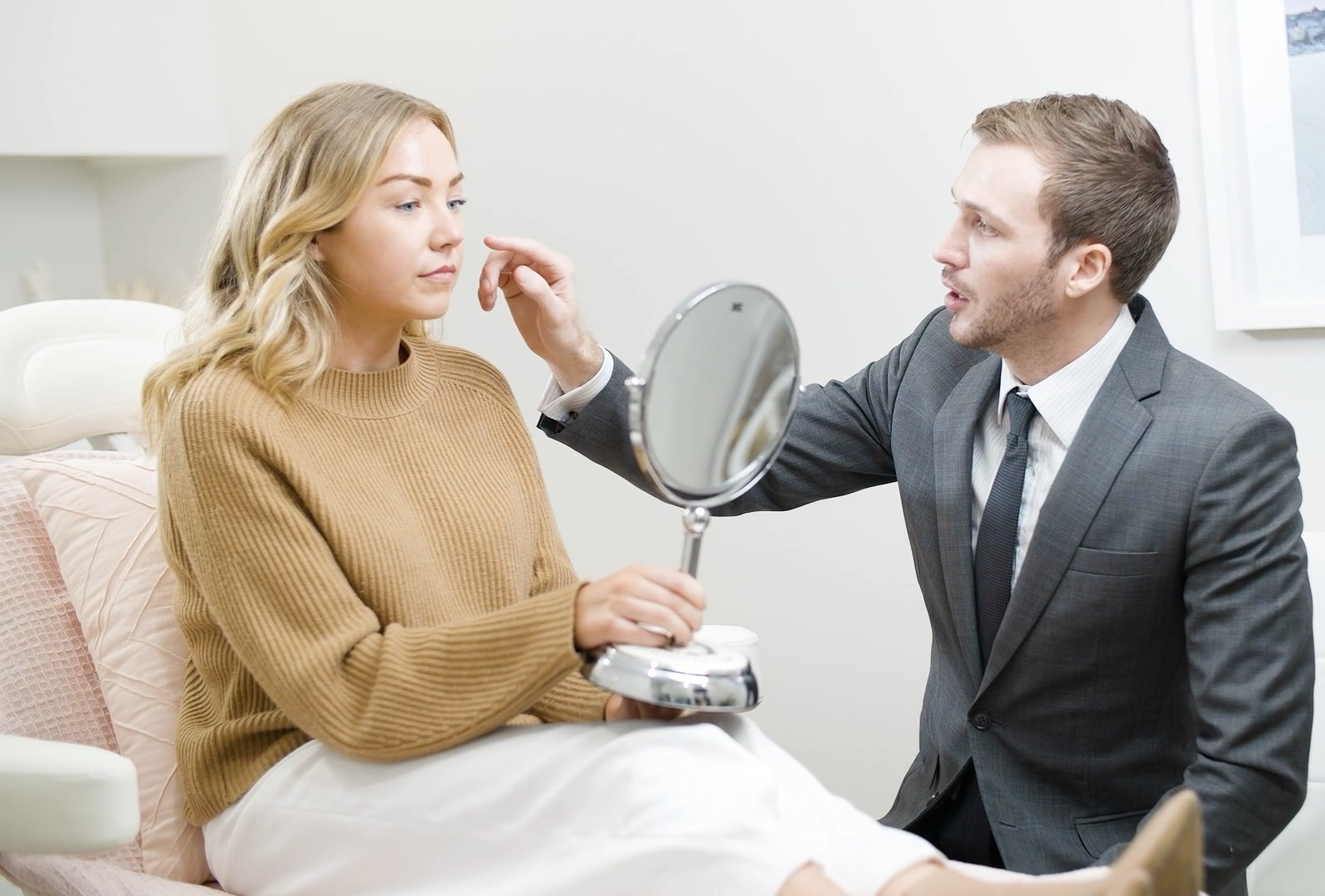What are the common problems with tear trough filler?
Treating tear troughs is complex, and should only be attempted by experienced practitioners. Even when performed correctly and in the right candidate, it can still be challenging to get right.
Under eye filler is used to correct hollow tear troughs, disguise lower eye bags and reduce dark circles. This can give you a refreshed and rested appearance.
Ensuring that your treatment is carried out by an experienced professional is the best way to minimise the risk of side effects, but as with everything in medicine, there are never any guarantees. Fortunately, problems from under eye filler to the tear troughs are uncommon, and can be easily corrected if needed with filler dissolving.
Overfilled tear troughs
A small tear trough is a natural feature of the face. Therefore, treating a hollow tear trough should not aim to completely disguise it. Overfilling the tear trough with dermal filler can cause lumps. These are most often noticed when smiling or gazing upwards.
Tear trough lumps can look like sausages, especially when too much filler has been placed with a cannula.
To correct overfilled tear troughs with lumps, dissolving is required. It can take many years for tear trough filler to wear off on its own.
After the tear trough filler has been dissolved, it can be redone more conservatively.
Blue discolouration under the eyes after filler (The Tyndall Effect)
Blue discolouration occurs when the under eye filler has been placed too close to the skin’s surface. It most commonly occurs when the filler has been placed using a cannula that was not positioned directly.
Rarely, correctly placed tear trough filler can surface, leading to a blue discolouration many years after your treatment.
Fortunately, if you have blue discolouration after under eye filler, it can be dissolved. The filler can then be redone 2 weeks later.
Swelling under the eyes after filler
Using the wrong type of filler can cause swelling under the eyes. This also occurs if too much filler is placed here. Filler draws in a large amount of water, so it is important to use one that pulls in a relatively small amount to minimise the risk of swelling.
Swelling after under eye filler also has a higher risk if the filler has not been placed deeply enough.
The solution is to dissolve the filler and then reassess whether you are a suitable candidate to re-treat the under eyes.
Which patients may not be suitable for under eye filler?
Not everyone is suitable for under eye filler. While an in-person assessment is the most effective way to determine your suitability, there are some general guidelines we follow when determining whether under eye filler is right for you.
Patients with excess skin under the eyes
People with loose skin that lacks elasticity may be more suitable for surgery and resurfacing of the skin. Injecting dermal filler when the skin quality is poor increases the risk of lumps and swelling. This is mainly seen in patients who are in their late 40s and beyond.
Patients with dark circles under the eyes
Under eye filler can improve dark circles by reducing shadowing, however it cannot completely correct them.
Dark under eye circles are caused by hollowness, skin pigmentation, chronic skin irritation and thin skin. Under eye filler only targets hollowness.
If you want a more noticeable improvement in your dark circles beyond what filler can achieve, then you may need to consider laser and skin treatments.


